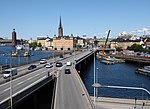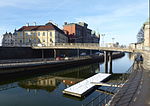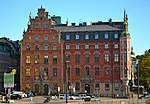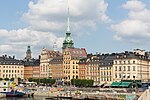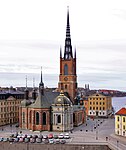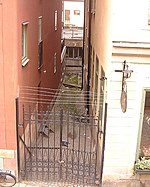Hebbes Bro
Bridges in StockholmSwedish bridge (structure) stubs

Hebbes Bro (Swedish: "Bridge of Hebbe") is a pedestrian bridge in Gamla stan, the old town of Stockholm, Sweden, connecting the two islands Riddarholmen and Stadsholmen. The bridge was given the name in 1924 after the building next to it owned by Simon Hebbe (1726–1803), manager at the East India Company, shipowner, and head of division of the national board of trade. In 1856-1866 the building in question was incorporated into the Old Parliament Building, which until 1905 was the location for the Riksdag.
Excerpt from the Wikipedia article Hebbes Bro (License: CC BY-SA 3.0, Authors, Images).Hebbes Bro
Hebbes bro, Stockholm Riddarholmen (Södermalms stadsdelsområde)
Geographical coordinates (GPS) Address External links Nearby Places Show on map
Geographical coordinates (GPS)
| Latitude | Longitude |
|---|---|
| N 59.323944444444 ° | E 18.066055555556 ° |
Address
Hebbes bro
Hebbes bro
114 27 Stockholm, Riddarholmen (Södermalms stadsdelsområde)
Sweden
Open on Google Maps
